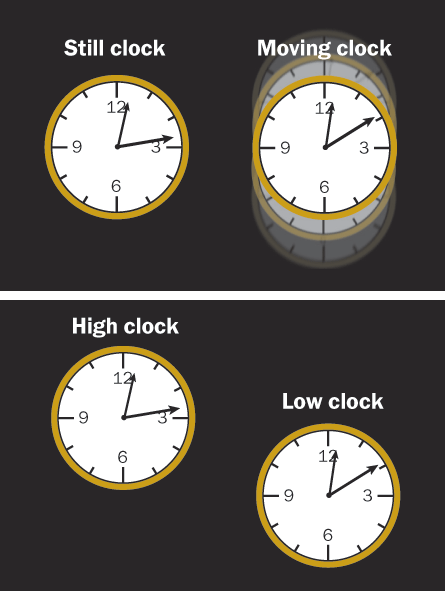- More than 2 years ago
Exploring the peculiar effects of Einstein’s relativity is no longer rocket science. Tabletop experiments at a lab in Colorado have illustrated the odd behavior of time, a strangeness typically probed with space travel and jet planes.

Using superprecise atomic clocks, scientists have witnessed time dilation — the bizarre speeding up or slowing down of time described by Einstein’s theories of relativity. The experiments are presented in the Sept. 24 Science.
“Modern technology has gotten so precise you can see these exotic effects in the range of your living room,” says physicist Clifford Will of Washington University in St. Louis. The experiments don’t reveal any new physics, Will says, but “what makes it cute and pretty cool is they have done it on a tabletop.”
Time dilation arises in two situations. In one case, time appears to move slower the closer you are to a massive object, such as the Earth. So a person hovering in a hot-air balloon, for example, actually ages faster than someone standing below.
Time also ticks by faster for someone at rest relative to someone moving. Einstein dramatized this second strangeness with the twin paradox — one 25-year-old twin traveling in a rocket ship near the speed of light for what he perceives as a few months will return to Earth to find the other has reached middle age.
Previous experiments with rockets and airplanes have demonstrated these odd aspects of general and special relativity. The notion of time running slower closer to Earth was even tested on the scale of a multistory physics building at Harvard.
Now advances in laser technology and the field of quantum information science have allowed researchers to demonstrate Einstein’s theories at much more ordinary scales.
The researchers used two optical atomic clocks sitting atop steel tables in neighboring labs at the National Institute of Standards and Technology in Boulder, Colo. Each clock has an electrically charged aluminum atom, or ion, that vibrates between two energy levels more than a million billion times per second. A 75-meter-long optical cable connects the clocks, which allows the team to compare the instruments’ timekeeping.
In the first experiment, physicist James Chin-wen Chou and his colleagues at NIST used a hydraulic jack to raise one of the tables 33 centimeters, or about a foot. Sure enough, the lower clock ran slower than the elevated one — at the rate of a 90-billionth of a second in 79 years. In a second experiment the team applied an electric field to one clock, sending the aluminum ion moving back and forth. As predicted, the moving clock ran slower than the clock that was at rest.
“It’s pretty breathtaking precision,” says physicist Daniel Kleppner of MIT. Of course scientists are well aware of these relativistic effects, he notes. The clocks on GPS devices are also affected by relativity, and appropriate adjustments are made to keep them working properly.
The experiments have more implications for precision instrumentation than they do for relativity, notes Chou. But they are a nice reminder that relativity is always at hand. “People tend to just ignore relativistic effects, but relativistic effects are everywhere,” he says. “Every day, people are moving; they are doing things like climbing stairs. It’s interesting to think about — are frequent flyers getting younger [because they move so much] or aging faster [because they spend so much time in the air]?”





